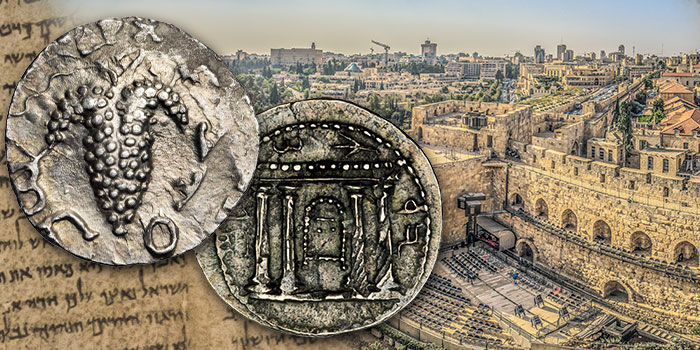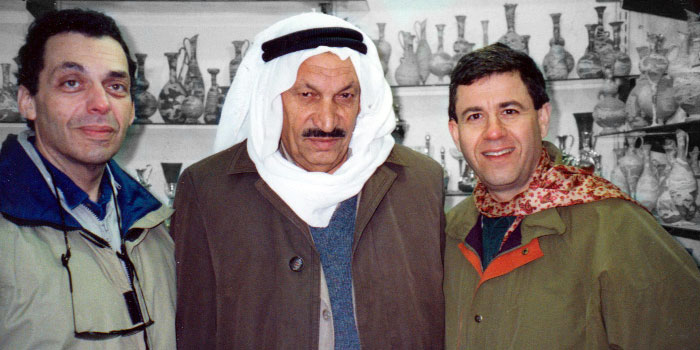
By David Hendin for CoinWeek …..
Many of you are my friends and acquaintances of more than 50 years. Others will become new friends. As I begin this series of regular articles for CoinWeek I will rehash and update some thoughts I have pondered before.
When I began collecting coins, I was about eight years old. I learned from my dad and his brothers who were collectors. When I lived in Israel for a year in the wake of the Six-Day War (June 1967), I found myself attracted to the shops that sold ancient coins in Jerusalem’s Old City.
At that time, collectors of ancient coins and artifacts were sort of cultural heroes; well appreciated as students and custodians of these treasures. Israel’s professors of archaeology were often found in Old City shops where they fully believed they were protecting many ancient Judean coins and artifacts from falling into obscurity. Indeed, major parts of the collections of The Israel Museum, including important original Dead Sea Scrolls, originated in the markets of Jerusalem, Hebron, Bethlehem, and other smaller villages.

By the way, Abu Ali al Tawil (as a boy he was among those who found the original scrolls) and Abou Anton (Kando—who bought and then sold them) were friends of mine. Stay tuned to this space and I’ll tell you more about Abu Ali and some of my other friends (see photo).
Since I’m writing for an audience of collectors, I have sometimes been surprised to meet collectors of coins (or stamps, or rocks, or butterflies, etc.) whose main goal is the objects themselves and not the information about them and their history.
A couple of score years ago I gave a talk before a group of modern Israel coin collectors. As I went along, it became obvious that I could read and write the ancient Hebrew script that appears on ancient Judean coins. And there was an exclamation of surprise: “How did he ever learn to do that?” one fellow mused loudly.
My friend the late collector Ed Janis said: “He learned it while you were out hunting for a Seafaring commemorative!”
This raises a good question. Why do we collect? Not only ancient coins, but modern and medieval, or even tokens and medals.
To be sure, there are many reasons to collect coins. Among them are fun, investment possibilities, and knowledge. A true collector may be driven by the force of all these, plus more. It is not easy to explain the thrill of collecting to a person who can’t wait to throw out last week’s magazines (sigh… my dear late mother, for example). Many avid collectors would liken their continuing search for coins to the “thrill of the hunt.” Finding a particular coin after searching for many years can be as exciting as catching a shark in the ocean (I’ve tried both).
But, I have never understood those who want to collect coins but who don’t care about learning the history behind them or what coins can tell us about the people who made and used them. They often want nothing more out of their coin collections than to fill the blank spaces in a book, or to complete a set of numbers in a catalog. I have met hundreds of people who strive to fill those blanks but who are turned off when it comes to making any kind of serious effort to learn anything about the coins that are filling the spaces. Yet this may be the most pleasurable aspect of collecting coins.
Then, of course, there are the “online experts” who may have been collecting for a year or so and are quick to declare which coins are genuine, cleaned, or “tooled”.
I would urge all collectors to consider journalist Malcom Gladwell’s “10,000-hour rule”, which states that one needs at least 10,000 hours of concentrated study to reach the first level of expertise in a field. This is not 10,000 of sitting around and saying that one collects coins but 10,000 hours of reading, writing, and studying real coins and literature about them. It is hard work, but fun.
It is a shame to collect the coins of biblical-period Israel without understanding the history of the Jewish, Christian, and Muslim religions right up to the modern-day; there are many resources on the subject.
Over the last 55 years, I have not only read the books and examined around one million coins in the market, private collections, and museums; I have also traveled to Lebanon, Egypt, Jordan, Israel, and the West Bank more than 100 times. I count friends in Beirut, Amman, Cairo, Jerusalem, and Tel Aviv… and towns such as Halhul, Edna, Bethlehem, and Hebron. Once these were places that were easy to access; I even studied Arabic to converse easier with many of my Arab friends.
Through these articles in CoinWeek, I hope to share some stories about the coins and the friends I have made along the way. The coins are nice, I still study them. And I am still friends with many of the Muslims, Christians, and Jews that I have met along the way. I have known some of the families for three generations.
With all due love and respect for the coins, the people intrigue me the most.
Send your questions to me at [email protected] and I will try to answer questions of general interest in this space in the future.
© 2021 by David Hendin
Parts of some CoinWeek articles may be adapted from my previous articles or my Guide to Biblical Coins.
* * *
David Hendin is First Vice President and an Adjunct Curator at the American Numismatic Society (ANS). Send him your questions at [email protected] and he will try to answer questions of general interest in this space in the future.





I look forward to your articles Mr. Hendin. I am rather new collector – just over a year – but my father and youngest brother collected for a decade or so in the late 1970’s and 80’s in the US. I am especially drawn to your interest in Israeli and Middle Eastern numismatics and history. Why? My father was born in Jerusalem in 1936 in what was then Palestine. His father was from a Greek family who migrated to Bethlehem when it was under the Ottomans. My father and grandfather became temporarily Jordanians with the 1948 partition when they left the Middle East and settled in the United Stats, some of my grandfather’s siblings moved farther to Australia.
One area of collecting I am pursuing is British Mandate Palestine coinage from 1927 – 1946. I love the rich history of the coins, the trilingual language and script, and, of course, its connection to my family history.
It can be tough as I have interests outside this area but I am starting slow and simple with a very modest budget. I wish to first acquire all the coin denominations and the King Edward VII Crown of 1936 (the year of my father’s birth)- starting with the cupro-nickel one. Then I will get the book “The Coins and Banknotes of Palestine Under the British Mandate, 1927-194″7 to learn more about this fascinating numismatic area.
One day I wish to present the coins along with a few family artifacts from my father’s youth in Palestine – his Palestine birth certificate, the business registry slip by the state of Jordan in 1949, and a picture of them on the USS Constitution heading to New York harbor as well as an official document of this passage.
If you can recommend other reading about this numismatic area – 20th century coinage in this area of the Levant (Israel, Jordan and Palestine) – I would love to know.
Look forward to your future articles.